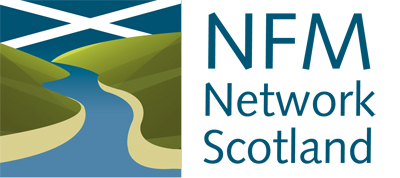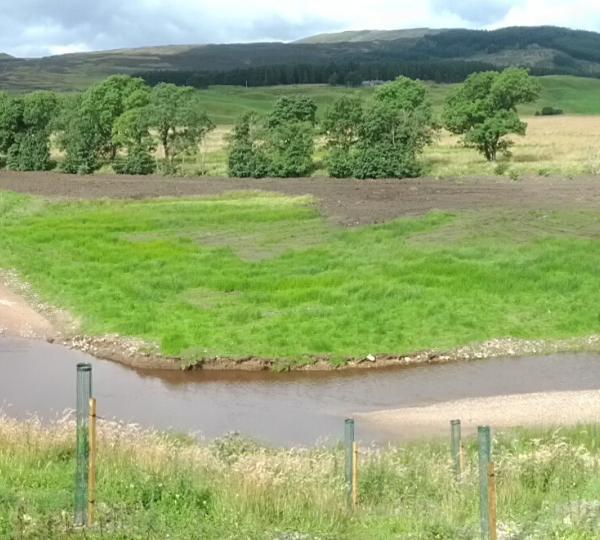The Rottal Burn in the South Esk Catchment was re-meandered in 2012. During the project 1100m of new channel plus backwaters was created, connection to wetlands was established, and 2000 native trees were planted.
The project aimed to restore the Rottal Burn to a more naturalised state to enable it to increase its general biodiversity potential, primarily to support functional populations of salmon and trout, and potentially to deliver habitat suitable for freshwater pearl mussels. It was anticipated that the morphological changes would also reduce the sediment load mobilised during high flow events (and subsequently deposited in the lower reaches) encouraging a more natural flow regime.
The work was carried out during April – August 2012. Materials were sourced from the local estate; existing gravel banks embankments were redistributed and woody debris, in the form of windblown Scots pine trees with root balls, came from estate woodland. The work was carried out in two phases. The new channel was constructed and profiled and the form allowed to stabilise before the flow was then diverted from the canalised system.
The project promoter was Esk Rivers and Fisheries Trust, with EnviroCentre Ltd providing assessment, design and construction management. Funding came from the SEPA Water Environment Fund and from Dee Ward (Rottal Estates).
Since 2012, stakeholders and researchers have worked together to support multiple student projects which collectively provide a broad evidence base for the restoration benefits. The projects have monitored morphological and ecological change over 6 years as the system has matured. This site provides a rare example of an unconstrained restored channel, reconnected to its floodplain. The project has successful stakeholder, landowner and agency collaboration, coupled with research and monitoring impact. Research and student involvement is directly informing the next generation of engineers and environmentalists (via Abertay University and other Scottish universities).

